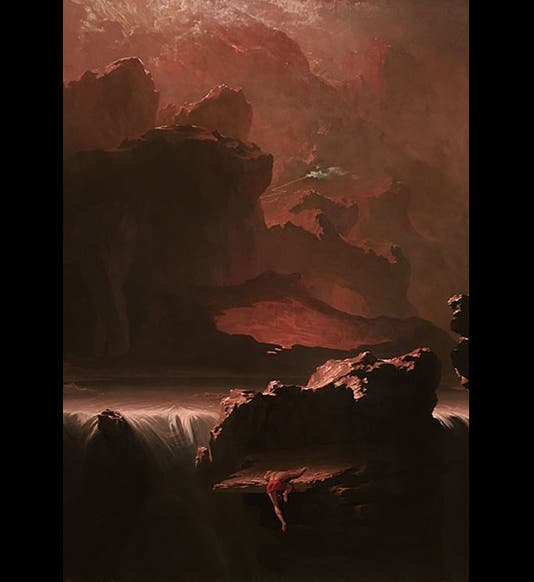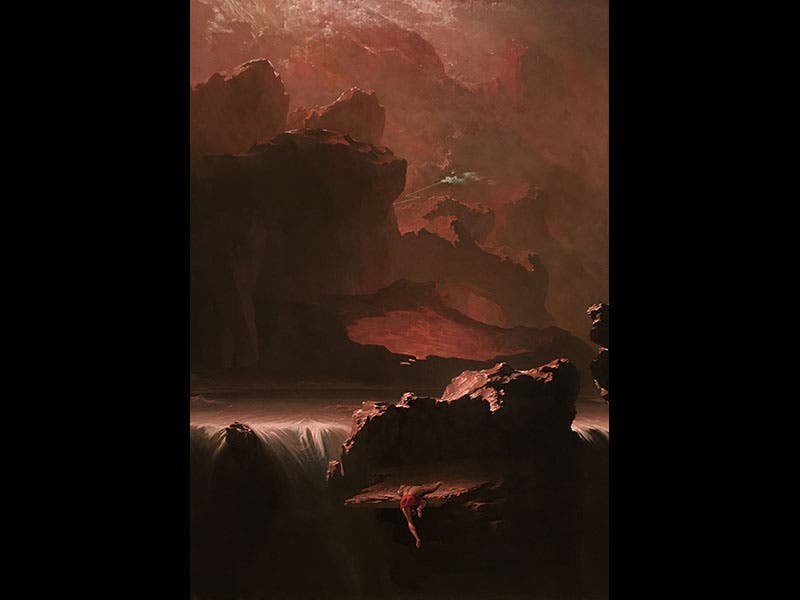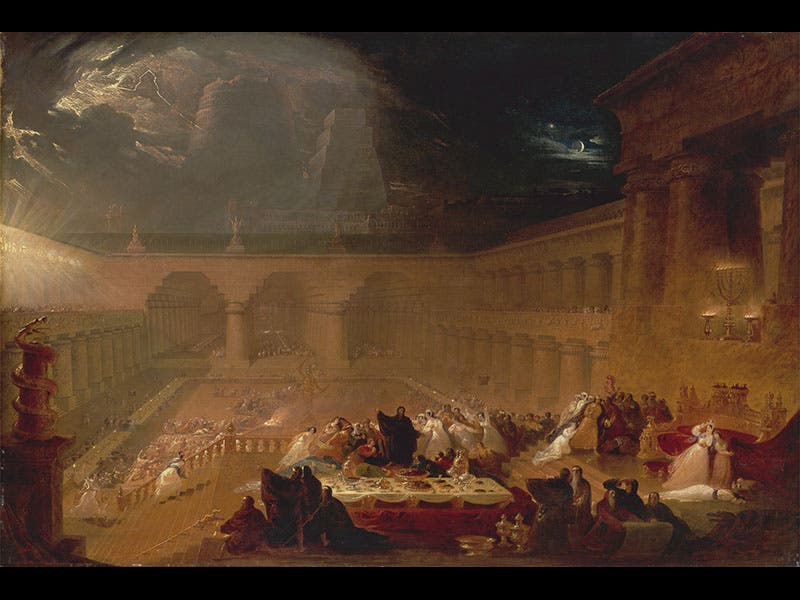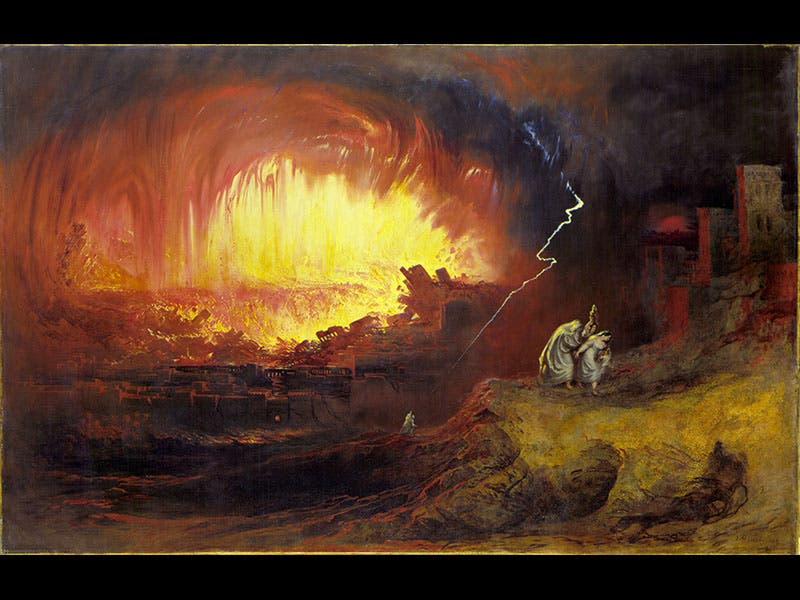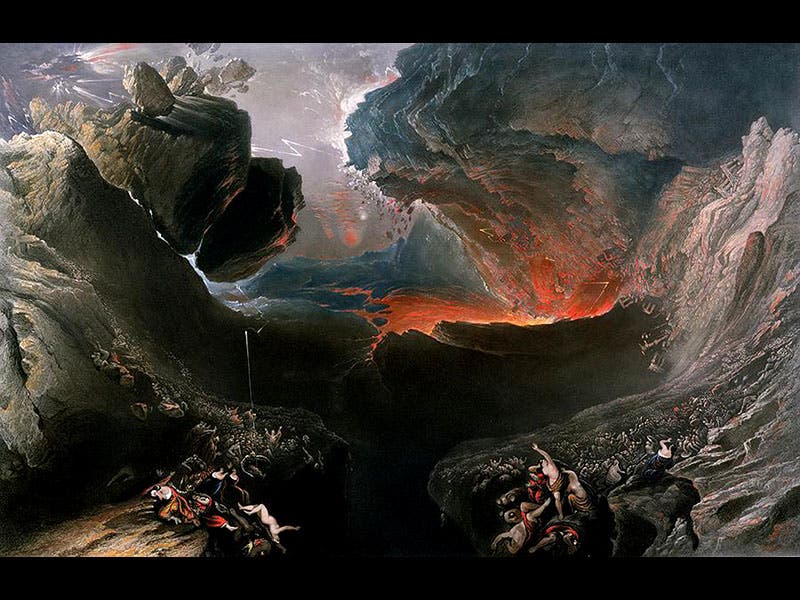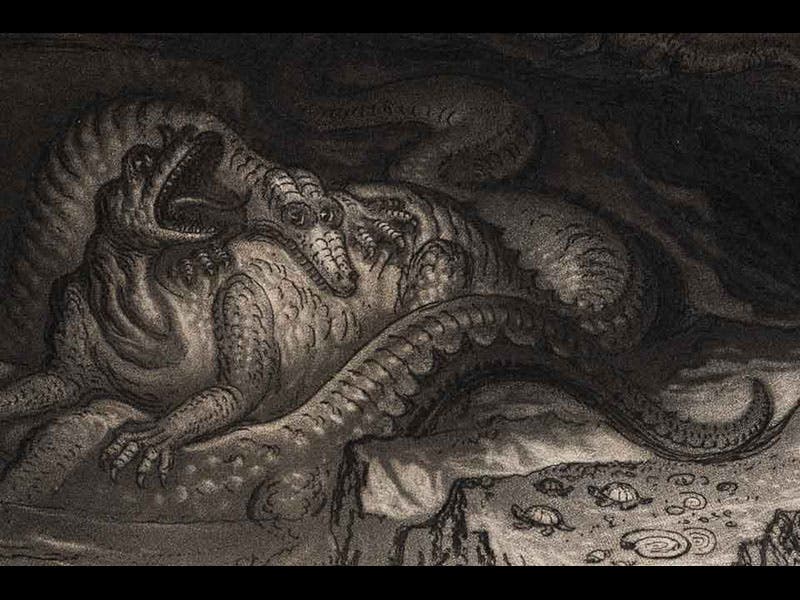Scientist of the Day - John Martin
John Martin, an English painter and engraver, was born July 19, 1789. Martin loved painting gloomy mountains, thunderstorms, and scenes of portending doom, which makes his paintings, in the vernacular of Romantic art, “sublime.” His earliest work, Sadak in Search of Oblivion (1812), epitomizes all the features of the art of the sublime, with its towering crags and tiny helpless human; it is on display in the St. Louis Museum of Art. Not surprisingly, Martin was drawn to Old Testament scenes of divine retribution, such as Belshazzar’s Feast (1820; Yale Center for British Art), The Destruction of Sodom and Gomorrah (1852; Laing Art Gallery, Newcastle), and Great Day of His Wrath (ca 1853; Tate Britain).
So who better to hire than Martin to capture the spirit of the tumultuous Mesozoic, when dinosaurs rampaged through an alien landscape? Gideon Mantell, who in 1822 had discovered one of the earliest dinosaurs, the Iguanodon, shrewdly chose Martin to bring Iguanodon to life in all its gory glory, which Martin dramatically did in a mezzotint called “The Country of the Iguanodon” (fifth and sixth images). It appeared as a frontispiece to Mantell’s Wonders of Geology (1838), and we displayed it in our Paper Dinosaurs exhibition some years ago. It is the first attempt in print to reconstruct a living image of the Age of Dinosaurs. Even though iguanodons were herbivores, we forgive Martin for his excesses, for no one knew anything about dinosaur lifestyles in 1838. Besides, who wants to see dinosaurs chewing on ferns, when they could just as well be munching on each other.
Dr. William B. Ashworth, Jr., Consultant for the History of Science, Linda Hall Library and Associate Professor, Department of History, University of Missouri-Kansas City. Comments or corrections are welcome; please direct to ashworthw@umkc.edu.

